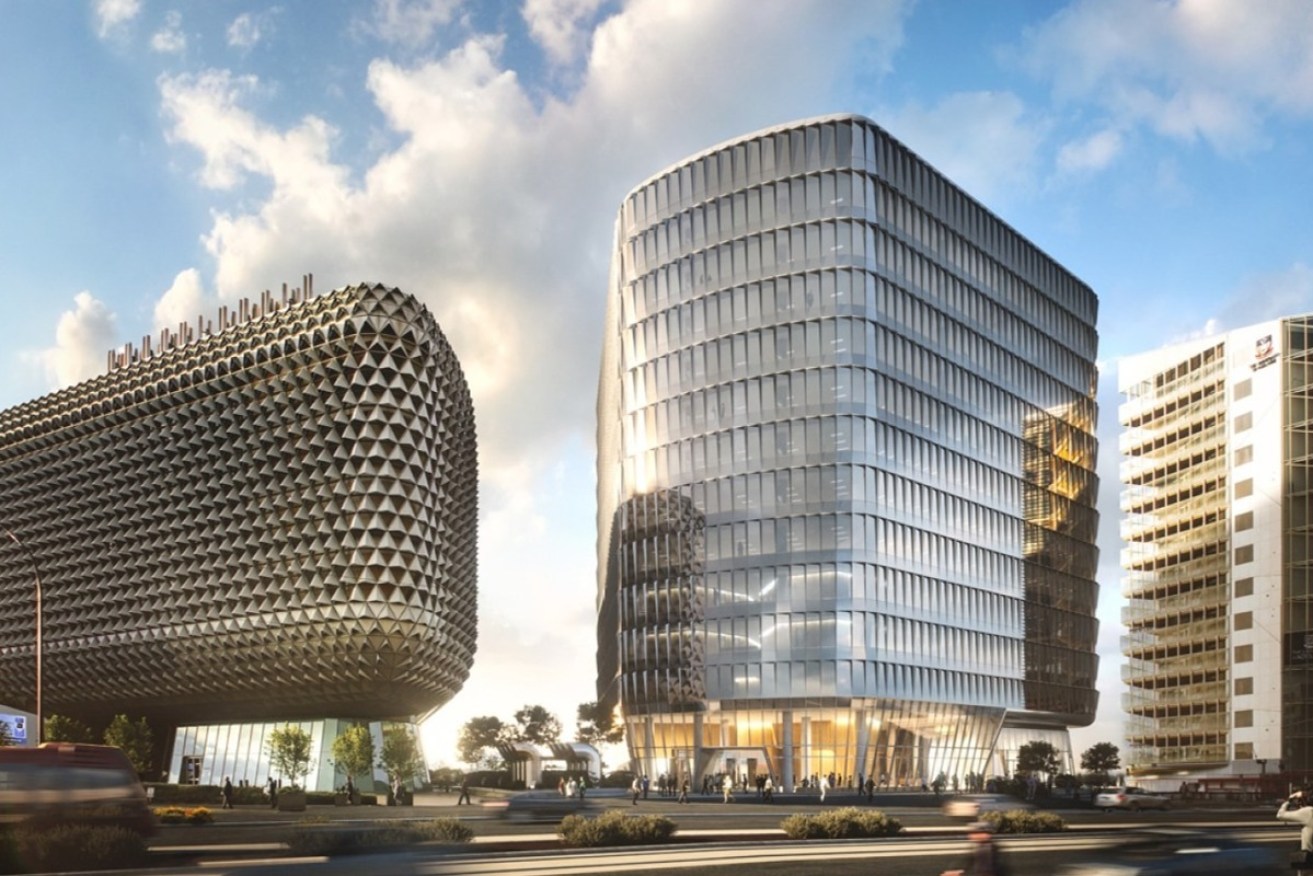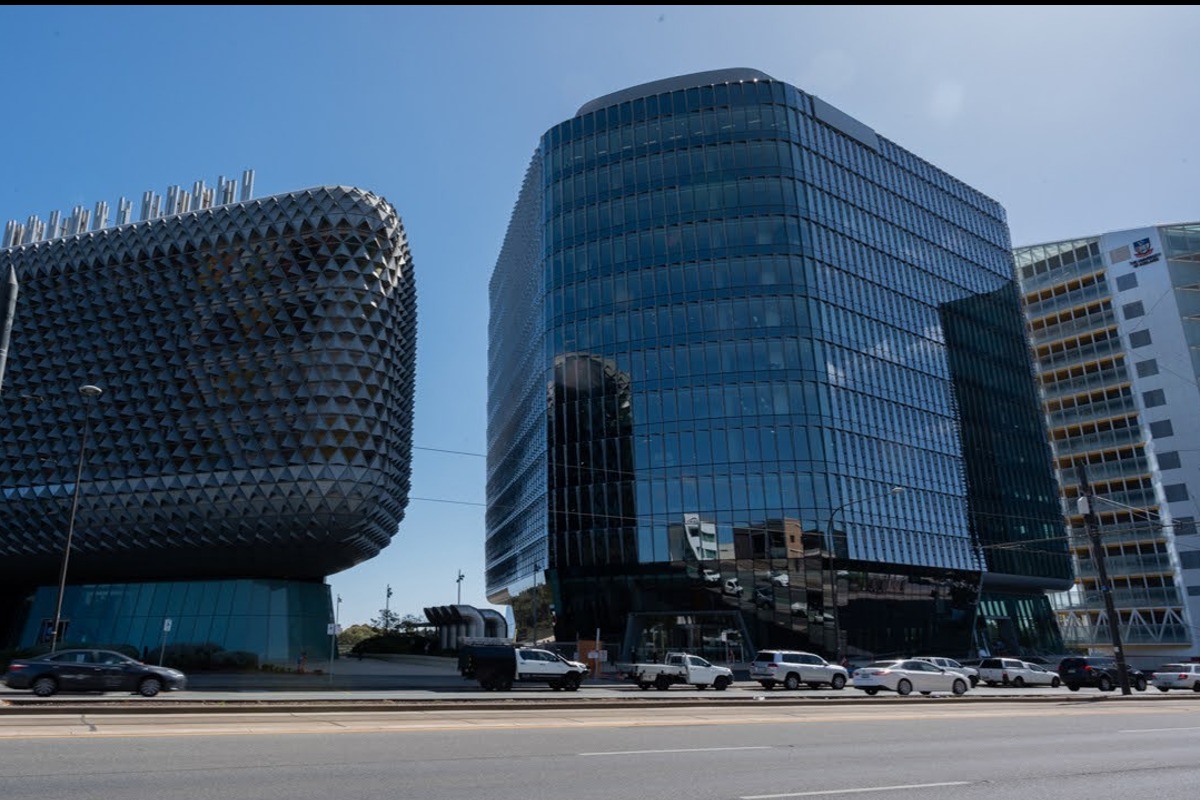Warnings over Adelaide proton therapy unit in 2017 as government looks for plan B
Warnings were made as far back as 2017 that the overseas supplier chosen to deliver a proton therapy unit at the Australian Bragg Centre was “extremely risky”, with the cancer facility now at risk of collapse and taxpayers on the hook.


The Australian Bragg Centre (right). Image: supplied
The $500 million Australian Bragg Centre on North Terrace is meant to house the southern hemisphere’s first proton therapy unit within a specially designed concrete bunker in the 12-storey building.
The federal government also provided a $68 million grant to the South Australian Health and Medical Research Institute (SAHMRI) to purchase the proton therapy unit, with the facility expected to treat around 800 cancer patients a year.
But there is now “significant doubt” within government over whether the therapy unit’s United States-based supplier, ProTom International, can deliver. The concerns were first reported by The Advertiser on Wednesday.
In a statement, the Australian Bragg Centre, a SAHMRI subsidiary, said it has been “advised that global supply chain issues have delayed the acquisition of key components, placing the project at a critical juncture”.
“Development of Australia’s first proton therapy unit is an extraordinarily ambitious and complicated project,” the centre said.
“Progressing the project to this stage has involved many significant accomplishments.
“SAHMRI and (The Bragg Centre) are unable to make further public comment while project partners work to identify the most suitable way forward.”
Treasurer Stephen Mullighan told ABC Radio Adelaide that “just less than two-thirds” of the federal government’s $68 million grant has been paid from SAHMRI to ProTom International so far.
That would equal around $45 million already spent on the facility.
Mullighan said ProTom International has over the last year been asking SAHMRI to “bring forward payments to help them keep the project on track”.
“I think our concern now is that after getting these repeated requests, particularly over the last 12 months for further advance payments, we had grave concerns over whether the company had the capacity to deliver the unit,” he said.

The state government has agreed to be one of the key tenants of the Australian Bragg Centre. Photo: Liam Jenkins/InDaily
SAHMRI’s concern about the project prompted a state government delegation to travel to the US last month, Mullighan said, with the government asking ProTom International shareholders to demonstrate that “they’ve got the capacity to deliver this project”.
“We’ve taken the extraordinary step… of saying no further payments, no further changes until they can demonstrate to us, accurately, and with complete certainty, that they can deliver this project,” Mullighan said.
“I think that certainly indicates that we’ve got very grave concerns over whether this company can deliver this unit as it’s been contracted.
“I’m certainly not willing to see any further payment extensions or any further contract variations to them while this company is clearly demonstrating to us that they’re struggling to deliver this contract.”
There were warnings about ProTom International’s suitability to deliver the proton therapy unit more than six years ago when the former Weatherill state government committed to building the second SAHMRI building.
The Australian reported in 2017 that Proton Therapy Australia (PTA), a private healthcare venture that has been working to establish a proton therapy centre in Australia since 2006, advised the federal government that choosing ProTom International was “extremely risky”.
PTA managing director Susanne Bleasel was quoted at the time questioning the company’s track record.
“The SA government did not seek our advice,” Bleasel said in 2017.
“However, various entities that were invited to tender, and the federal health minister, sought and were given advice.
“PTA advised choosing a proton technology vendor without a proven track record of treating patients was extremely risky.”
Bleasel did not comment when contacted by InDaily today.
ProTom International has delivered a version of its proton therapy unit to a medical facility in Boston.
But Mullighan said the company was “by no means a predominant supplier globally, if I can put it like that”.
The former Weatherill state government committed to building the second SAHMRI building in the Adelaide BioMed Precinct in 2017 and committed to $47.4 million to assist the project.
The state government money included a $10.6 million grant to assist the Bragg Centre’s planning and development and $36.8 million to relocate the Train Control Centre from North Terrace to Dry Creek – freeing up the land for development.
The state government will also be a cornerstone tenant of the Bragg Centre through SA Health. Mullighan said this arrangement might expose the state government to a “significant liability”.
“The government is now on the hook for a very substantial, long-term financial contribution for the building itself through long-term leasing arrangement,” he said, adding that the former Marshall Government had agreed to “underwrite the successful installation of this proton therapy unit”.
“If we’ve got serious questions about whether that can even be feasibly delivered… then that’s a very significant liability for the state government as well.”
Health Minister Chris Picton said the state government was investigating whether a proton therapy unit from another supplier could be installed in the Bragg Centre.
“There’s been a specific bunker built for this particular machine of which there is only one in operation in the world but there are many other providers who have many other machines around the world,” Picton told ABC Radio Adelaide.
“We need to see whether it’s possible for another provider.
“That’s one of the options that’s being investigated as well as if there’s any other options around the proton machine which some components of which have been constructed already.”




